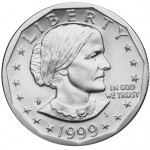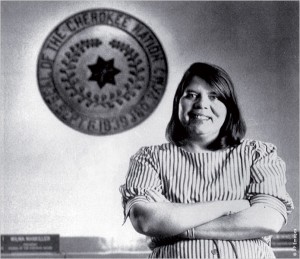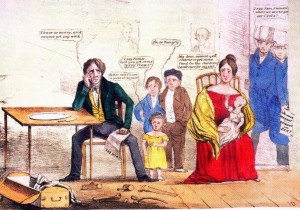 During the course of searching for information, I stumbled upon the website for Women on 20s. It is a site dedicated to replacing the image of President Andrew Jackson with a woman by 2020. The group has targeted the $20 Federal Reserve Note to be replaced 2020 because it is the 100th anniversary of the passage of the 19th Amendment that granted women the right to vote.
During the course of searching for information, I stumbled upon the website for Women on 20s. It is a site dedicated to replacing the image of President Andrew Jackson with a woman by 2020. The group has targeted the $20 Federal Reserve Note to be replaced 2020 because it is the 100th anniversary of the passage of the 19th Amendment that granted women the right to vote.
Jackson is being targeted because as we look back through the long lens of history, he was not exactly a model person judging by today’s standards. During the War of 1812, Jackson led U.S. Army troops against native tribes working with the British against the United States to regain the lands taken following the colonies’ independence. It was said that Jackson’s troops were brutal against the native tribes on his orders, killing them rather than taking prisoners.
After beating back the British in the Battle of New Orleans, Jackson declared martial law in New Orleans and used his troops to enforce martial law. Aside from having a magistrate arrested who sided with a newspaper reporter writing who was arrested for writing negatively about his rule, he had members of the local militia who sided with the British executed without trial and went on to use it as propaganda to allegedly maintain order.
As president, Jackson’s policies to relocated native tribes lead to the Indian Removal Act that codified his policies. This lead to the “Trail of Tears” that forced the relocation of Cherokee, Muscogee, Seminole, Chickasaw, and Choctaw nations from their ancestral homelands in the southeast to an area west of the Mississippi River that had been designated as Indian Territory. It is considered the most violent and brutal act against the native tribes in United States history.
To have Jackson’s portrait on the United States central banks’ currency is also a bit ironic. Jackson was against the concept of a central bank and refused to renew the charter of the Second Bank of the United States and vetoed the bill to continue its charter. After winning election in 1833, Jackson withdrew all of the country’s funds from the bank limiting the bank’s ability to conduct business. He gave power to local banks to lend money and issued the Specie Circular, an executive order requiring government transaction be done in gold and silver coin (specie).
With the western expansion and federal lands being made for sale and the requirement that duties were to be paid in gold and silver, this created a run on banks that could not provide the hard currency necessary for people to exchange their banknote. Although Jackson paid off the country’s debt in 1835, the only year it has ever been paid off, the squeeze on currencies, lack of central management of money, corrupt bank practices, and reckless land speculation by railroads lead to the Panic of 1837. The resulting depression lasted five years and included the default of many banks and the treasuries of many states. Remember, this was long before the deposits were insured by the federal government.The Women on 20s organization does not believe that this should be the legacy honored on U.S. currency. But if we look into the history of all of the men on U.S. currency, there are aspects of their pasts and personal lives that would make some blush, including Benjamin Franklin’s common law wife and illegitimate son.
 Women on 20s do recognize that suffragette Susan B. Anthony did appear on a one dollar coin but the coin failed because of its confusion with the quarter. They also recognize that Sacagawea, the Shoshone guide to Meriwether Lewis and William Clark, appears on the current one-dollar coin. Aside from the 2003 Alabama State Quarter, no other woman has appeared on circulating coinage (they do not count commemorative issues). Since neither dollar coin has circulated well and since the Alabama quarter was a temporary issue, the organization believes a better tribute is warranted.
Women on 20s do recognize that suffragette Susan B. Anthony did appear on a one dollar coin but the coin failed because of its confusion with the quarter. They also recognize that Sacagawea, the Shoshone guide to Meriwether Lewis and William Clark, appears on the current one-dollar coin. Aside from the 2003 Alabama State Quarter, no other woman has appeared on circulating coinage (they do not count commemorative issues). Since neither dollar coin has circulated well and since the Alabama quarter was a temporary issue, the organization believes a better tribute is warranted.
In what looks like an addendum to their argument, they mention that a portrait of Martha Washington appeared on the Series 1886 (Fr. #215) and 1891 (Fr. # 223) $1 Silver Certificates. Both Martha and George Washington appeared on the reverse of $1 Series 1896 Educational Series note (Fr. #224).
To decide who they will try to lobby to appear on the $20 note, the organization started with 15 candidates. Voters were asked to select thee of the 15 candidates in this preliminary round. The top vote-getters will be subject to another final voting round.
In the first round, the 15 candidates were Alice Paul (appeared on the 2012 First Spouse gold coin), Betty Friedan, Shirley Chisholm, Sojourner Truth, Rachel Carson, Rosa Parks, Barbara Jordan, Margaret Sanger, Patsy Mink, Clara Barton, Harriet Tubman, Frances Perkins, Susan B. Anthony (appeared on the 1979-1999 dollar coin), Eleanor Roosevelt (appeared on the 2014 First Spouse gold coin), and Elizabeth Cady Stanton.Women on 20s reported that 256,659 people had cast ballots when the first round ended on April 5, 2015. They reported that Eleanor Roosevelt, Harriet Tubman and Rosa Parks were named by as many as half of the voters as one of their top three. They added Wilma Mankiller to the final ballot. Mankiller, the first female Chief of the Cherokee Nation and the first female to be a chief of a native nation, was added because of a claimed “strong public sentiment that people should have the choice of a Native American to replace Andrew Jackson.”

Wilma Mankiller, the first female principal chief of the Cherokee Nation
Voting is open at the time this is being written. There is no closing date listed on their website.
Since congress does not control the design of the currency, Women on 20s will have to convince the Federal Reserve to change the design of the $20 Federal Reserve Note. If the Federal Reserve, whose chair is Janet Yellen, agrees to the change, they will work with the Bureau of Engraving and Printing for the design and the U.S. Secret Service to ensure that the appropriate anti-counterfeiting measures are included.
Design changes to any Federal Reserve Note can take 3-5 years to complete.
NOTE: I contacted the Women on 20s organization for comments via email. That email has not been returned at the time of writing this article. If they answer my questions, I will publish them in a follow up post.
Coin images courtesy of the U.S. Mint
Image of Wilma Mankiller courtesy of the Native American Encyclopedia.




Scott,
We could compromise and put two faces on a $20 note. Large size paper money had more than one vignette quite often. The problems we are dealing are:
1. Our paper money is in a rut
2. Poorly informed and, at best, mediocre political leadership in both political parties.
3. Bad memories of the Susan B. Anthony Dollar. It was, in my opinion, the worst designed coin in US history. She looks like a grumpy old woman who reminds people of an old Aunt they wish would stay away.
Regarding Andrew Jackson, you make good points. He and Woodrow Wilson are two overrated Presidents.
I am far more concerned about our shrinking middle class, a lackluster economy, Social Security that is headed for trouble and other economic problems than who is on our currency. I have a 20 year old niece who is in college. I have told her that I feel sorry for her generation. They will inherit a mess.
Finally Scott, I am glad these days to have my health. My gall bladder was removed on Good Friday and I needed a procedure on the following Monday to work on my bile ducts. The gall bladder was infecting my liver. In years gone by, before today’s medical technology, my liver would have been destroyed and that would have sent me to my grave. I am glad to have a long future, I hope.